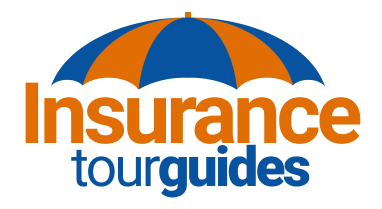Selecting the right health insurance plan can be overwhelming, but it’s crucial to ensure you have the coverage you need without breaking the bank. This guide will help you navigate the process of choosing the best health insurance plan based on your individual needs, budget, and coverage options. We’ll cover tips on comparing plans, understanding premiums, deductibles, and out-of-pocket costs to make an informed decision.
Assess Your Healthcare Needs
1. Evaluate Your Health Status: Consider your current health, any ongoing medical conditions, and the frequency of doctor visits. If you have chronic conditions or require regular medication, you may need a plan with comprehensive coverage.
2. Anticipate Future Needs: Think about any upcoming medical procedures or life changes, such as starting a family. Choose a plan that will accommodate these needs.
3. Family Considerations: If you’re selecting a plan for your family, consider the healthcare needs of all family members. Ensure the plan covers pediatric care, maternity services, and any specialist care that might be necessary.
Understand the Basics of Health Insurance
1. Premiums: The premium is the amount you pay monthly for your health insurance plan. While lower premiums can be attractive, they often come with higher out-of-pocket costs. Balance your premium costs with the level of coverage you need.
2. Deductibles: The deductible is the amount you pay out-of-pocket for healthcare services before your insurance begins to cover costs. Plans with higher deductibles typically have lower premiums and vice versa. Consider your ability to pay the deductible when choosing a plan.
3. Copayments and Coinsurance:
- Copayments (Copays): A fixed amount you pay for a covered healthcare service, such as $20 for a doctor’s visit.
- Coinsurance: A percentage of the cost of a covered service that you pay after you’ve met your deductible. For example, you might pay 20% of the cost of a service while your insurance covers 80%.
4. Out-of-Pocket Maximums: The out-of-pocket maximum is the most you’ll have to pay for covered services in a policy period, usually a year. Once you reach this amount, your insurance covers 100% of covered services. Consider plans with a lower out-of-pocket maximum if you want more predictable healthcare costs.
Comparing Health Insurance Plans
1. Types of Plans:
- Health Maintenance Organization (HMO): Requires you to use a network of doctors and get referrals for specialists. Generally has lower premiums and out-of-pocket costs.
- Preferred Provider Organization (PPO): Offers more flexibility to see out-of-network doctors without referrals. Usually has higher premiums and out-of-pocket costs.
- Exclusive Provider Organization (EPO): Similar to HMOs but does not require referrals for specialists. Limited to a network of providers.
- Point of Service (POS): Combines features of HMOs and PPOs. Requires referrals for specialists but offers out-of-network coverage.
2. Coverage Options: Compare the coverage options of different plans, including:
- Preventive care
- Emergency services
- Hospitalization
- Prescription drugs
- Mental health services
- Maternity and newborn care
- Pediatric services
3. Network of Providers: Check if your preferred doctors and hospitals are in-network. Using in-network providers typically costs less than out-of-network providers.
4. Prescription Drug Coverage: If you take regular medications, ensure the plan covers your prescriptions. Review the plan’s formulary (list of covered drugs) and the cost-sharing details.
Tips for Choosing the Best Plan
1. Use Comparison Tools: Online tools and resources can help you compare different health insurance plans. Websites like Healthcare.gov and private insurance marketplaces offer comparison tools to evaluate plans based on cost, coverage, and other factors.
2. Read Plan Summaries: Review the Summary of Benefits and Coverage (SBC) for each plan. This document provides an overview of what the plan covers and the associated costs.
3. Calculate Total Costs: Consider the total cost of each plan, including premiums, deductibles, copayments, coinsurance, and out-of-pocket maximums. A plan with a higher premium might have lower overall costs if you anticipate needing significant medical care.
4. Consider Health Savings Accounts (HSAs): High-deductible health plans (HDHPs) often come with the option to open a Health Savings Account (HSA). HSAs allow you to save pre-tax money for medical expenses, which can help offset higher out-of-pocket costs.
5. Seek Professional Advice: If you’re unsure which plan is best for you, consider consulting with a licensed insurance agent or broker. They can provide personalized advice based on your specific needs and circumstances.
Conclusion
Choosing the right health insurance plan involves assessing your healthcare needs, understanding key insurance terms, and comparing different plans. By carefully evaluating premiums, deductibles, co-payments, coinsurance, and out-of-pocket maximums, you can select a plan that offers the best coverage for your budget and healthcare requirements. Use available resources and seek professional advice to make an informed decision and ensure you have the protection you need for your health and well-being.

